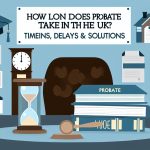Table of Contents

Key Takeaways
- Life interest trusts allow for asset control while providing for loved ones.
- They can offer significant tax advantages and protect assets for future generations.
- Setting up a life interest trust involves choosing trustees and defining terms clearly.
- These trusts are particularly useful in blended family situations.
- Understanding the implications of life interest trusts on tax and inheritance can help in making informed decisions.
Life Interest Trusts Explained
Let’s dive into what life interest trusts are and how they can be a game-changer for your family’s future. A life interest trust is a legal arrangement where assets are managed by trustees for the benefit of a beneficiary for their lifetime. After the beneficiary’s death, the assets then pass to other individuals known as remaindermen. Think of it as a relay race where the baton is passed from one runner to the next, ensuring that everyone gets a turn.
These trusts are particularly valuable when you want to provide for a spouse or partner after you’re gone, without giving away the entire control of your estate. It’s like giving someone a VIP pass to use your assets while ensuring the main event – your estate – is preserved for others down the line.
What is a Life Interest Trust?
A life interest trust is created when someone, known as the settlor, places assets into a trust. This settlor then specifies a person, the life tenant, to receive benefits from the trust during their lifetime. It’s like lending your favorite book to a friend, with the understanding that it will be returned to your family after your friend is done reading it.
Most importantly, the life tenant can often live in a property held within the trust or receive income generated by the trust’s assets. But they can’t cash in the assets and walk away. Because of this, life interest trusts are a powerful tool in estate planning.
How Trusts Work
Imagine you have a treasure chest of valuables. You want to make sure that while you’re not around, someone you trust looks after it and allows your loved ones to enjoy the treasures without giving them the key to the chest. That’s essentially how a trust works. You transfer your assets into the trust and appoint trustees – they are the guardians of your treasure chest. The trustees then follow your instructions on how to use the assets to benefit the life tenant.
Therefore, the life tenant gets the enjoyment and use of the assets without owning them outright. This can help protect the assets from potential future problems like bankruptcy or divorce claims against the life tenant.
Common Myths About Trusts
There’s a lot of misinformation out there about trusts. Some people think they are only for the ultra-wealthy or that they are too complicated to set up. But that’s not the case. Trusts, including life interest trusts, can be an effective part of estate planning for many people, not just the super-rich.
- Myth: Trusts are only for the rich.
- Myth: Trusts are too complicated.
- Myth: Trusts are expensive to manage.
Dispelling these myths is key to understanding how a life interest trust can work for you and your family. Now, let’s explore how to secure your family’s future with these trusts.
Tax Efficiency and Estate Planning
One of the standout benefits of life interest trusts is their ability to offer tax efficiency. By placing assets into a trust, you may reduce the inheritance tax burden on your estate. This is because the assets in the trust are no longer part of your estate for inheritance tax purposes. It’s a bit like having a discount coupon for tax; you get to pass on more to your loved ones and less to the taxman.
However, it’s not all about tax savings. Estate planning is also about ensuring your wishes are carried out after you’re gone. With a life interest trust, you can specify exactly how you want your assets to be used, which can bring peace of mind to both you and your beneficiaries.
Because of these advantages, setting up a life interest trust can be a smart move. But, like any financial decision, it comes with considerations. You need to think about the potential impact on your beneficiary’s entitlement to means-tested benefits, as the income or benefits from the trust could affect their eligibility.
Also, the tax rules can be complex, and they do change from time to time. That’s why it’s essential to get up-to-date advice to make sure a life interest trust is right for you and your family.
Example: If the life tenant is entitled to receive rental income from a property within the trust, this income will be taxed as their income for the duration of their life interest.
Control Over Asset Distribution
Control is a significant factor when it comes to asset distribution. With a life interest trust, you have the power to determine who benefits from your assets and when. It’s like setting the rules for a game where you decide who plays and who watches, ensuring that everyone gets their fair turn.
Steps to Setting Up a Life Interest Trust
Setting up a life interest trust isn’t as daunting as it may seem. Here’s how you can get started:
Choosing Trustees
The first step is choosing the right trustees. These are the people who will manage the trust on your behalf. Think of them as the captains of your ship; you need to trust that they will steer it in the right direction. They should be people you trust implicitly, who understand your wishes, and who are willing and able to take on the responsibility.
Defining Trust Terms
Next, you’ll need to define the terms of the trust. This includes deciding what benefits the life tenant will receive, such as income or the right to live in a property. You’ll also need to consider what happens if circumstances change – for example, if the life tenant wants to move house.
Life Interest Trust Documentation
Once you’ve chosen your trustees and defined the terms, you’ll need to get the documentation in order. This usually involves a legal document called a trust deed. It’s important to get this right, so it’s worth getting professional help to make sure all the legalities are covered, such as with the essential guide to trust law.
Remember, while setting up a trust does involve some upfront work, the long-term benefits for your family can be substantial. It’s about laying down a clear path for your assets to follow, ensuring they end up in the right hands at the right time.
When Life Interest Trusts are Most Effective
Life interest trusts are not a one-size-fits-all solution, but there are certain situations where they can be particularly effective. For instance, they can be a strategic part of estate planning to ensure that your assets are managed efficiently and in accordance with your wishes.
Blended Family Scenarios
For those with blended families, a life interest trust can provide a perfect balance. It allows you to provide for a new spouse while also ensuring that children from a previous relationship inherit in the future. It’s like a family recipe that includes ingredients for all to enjoy, without leaving anyone out.
In these scenarios, the trust helps to navigate the complex family dynamics by providing clear instructions on who benefits and when. This can prevent disputes and ensure that everyone is treated fairly.
For example, you might set up a trust that allows your second spouse to live in your family home for the rest of their life. After they pass away, the property then goes to your children from your first marriage. This way, you can take care of your spouse without disinheriting your children.
Example: John wants to ensure that his second wife, Emily, has a place to live after he’s gone, but he also wants his children from his first marriage to inherit the family home eventually. By setting up a life interest trust, he can provide for Emily’s needs while protecting the inheritance for his children.
Long-Term Care Considerations
Another key area where life interest trusts shine is in planning for long-term care. If the life tenant needs to go into care, the trust assets are not usually counted when assessing their ability to pay for care. This means the assets can be preserved for future generations rather than being depleted by care costs.
However, it’s important to note that this is a complex area and there are rules to prevent deliberate deprivation of assets. So, if you’re considering a life interest trust for this reason, it’s crucial to get expert advice to ensure it’s set up correctly and meets all legal requirements.
FAQs
Can You Change a Life Interest Trust?
Yes, you can change a life interest trust, but it’s not straightforward. It requires the agreement of all beneficiaries, including the life tenant and remaindermen. If everyone agrees, the trust can be altered or even wound up. However, if the beneficiaries are minors or not yet born, the court’s approval may be needed. Think of it like remodelling your house; you need permission from all the stakeholders, and sometimes even the local authorities.
What Happens to a Trust After the Life Tenant’s Death?
Upon the death of the life tenant, the trust doesn’t just vanish. Instead, the assets within the trust pass to the remaindermen as specified in the trust deed. It’s a bit like a stage play; when the lead actor’s part is over, the supporting cast takes over to continue the show. This seamless transition is one of the reasons life interest trusts are so effective for estate planning.
It’s important to ensure that the trust deed clearly outlines what happens after the life tenant’s death, to avoid any confusion or disputes among the remaindermen. Professional advice can help to ensure that all eventualities are considered and planned for.
Are Life Interest Trusts Safe from Divorce Claims?
Assets within a life interest trust are generally protected from divorce claims against the life tenant. Since the life tenant doesn’t own the assets outright, they’re not usually considered part of the marital assets. It’s akin to wearing a raincoat in a downpour; the trust acts as a shield, keeping the assets safe from being divided up in a divorce settlement.
How Does a Life Interest Trust Affect My Tax Position?
A life interest trust can have various tax implications. For the life tenant, the income generated by the trust is usually taxed as their income. For the remaindermen, the trust assets will typically form part of their inheritance and may be subject to inheritance tax when they receive them. It’s like having two separate tax profiles; one for the life tenant and one for the remaindermen.
However, because the assets are held in trust, they’re not part of the life tenant’s estate for inheritance tax purposes, which can result in tax savings. It’s a complex area, so it’s wise to consult with a tax specialist to understand the specific implications for your situation.
Can a Property in Trust be Sold?
Yes, a property held in a life interest trust can be sold, but it’s not a decision that the life tenant can make alone. The trustees have the legal authority to sell the property, and they must act in the best interests of all beneficiaries, including the life tenant and remaindermen. If selling the property is the best course of action, the life tenant’s right to benefit from the trust must still be honored, perhaps by using the sale proceeds to purchase another property or by investing the money to generate income.
The trustees must agree to the sale of the property.
The interests of all beneficiaries must be considered.
The life tenant’s right to benefit from the trust must be maintained.
- The True Cost of Probate in the UK: Fees, Taxes, and Hidden Charges – 9 January 2026
- Do You Always Need Probate? When You Can (and Can’t) Avoid It – 6 January 2026
- How Long Does Probate Take in the UK? Timelines, Delays & Solutions – 3 January 2026






